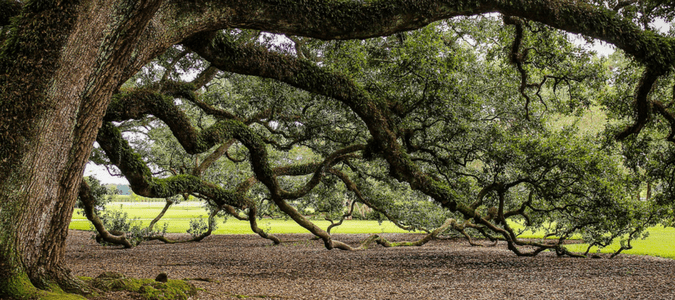
You opted for the house with the big yard. Only there’s a problem. It’s kind of hard to go outside–at all–in a yard without any trees to shield you from the blistering Texas summer sun. So now you’re wondering: should I get a shade tree? More than one? What are the most common trees in Texas? How long do they take to grow? What exactly do you need to do to care for them?
What You Need to Know About Shade Trees in Texas
You can start to answer your own questions by looking around and doing some “Texas tree identification” on your own. In other words, the best place to start is with the shade trees that you see growing in your own neighborhood.
From there, though, you’re probably going to need a bit of help. You’ll need to learn what it takes to get the shade tree that’s right for you and your property–and how to keep it going strong for generations.
Keep reading, and we’ll answer some of the most common questions about four different kinds of Texas shade trees.
Live Oak
If you have a house with a large yard, live oaks can be wonderful shade trees. Besides growing to be about 35-40 feet tall, these massive trees tend to reach more than 75 feet wide, with some towering over 100 feet tall.
So, this tree species is not great for smaller city lots. But if you have the room, live oaks can be amazing shade trees that offer a canopy both wide and dense–perfect for getting a little respite from those troublesome Texas UV rays.
Time to reach adulthood
Live oaks take about 50 years to grow into a mature tree.
Disease vulnerability
Live oaks are particularly susceptible to oak wilt.
Care
Besides the need for space, caring for a live oak is pretty easy. It does just as well in full sun as in partial shade and isn’t particularly picky about soil type either. Acidic loam is best, but certainly not a deal breaker.
To help your shade tree get its root system established, you will need to irrigate regularly and prune annually for the first three years. Never prune in spring or early summer, though, because this can attract the bugs that carry oak wilt.
Chinese Pistache
Need a smaller tree? The Chinese pistache may be just what you’re looking for.
With a 30-foot “footprint” and an average height between 35-45 feet, it’s an ideal tree for bringing shade to a single-story home. Plus, the leaves turn to a bright, beautiful red in the fall.
Time to reach adulthood
Chinese pastiche trees take between 20 and 40 years to reach maturity.
Disease vulnerability
Verticilium wilt is a disease which tends to impact this tree species.
Care
The Chinese Pistache needs lots of sun and well-draining soil. Additionally, you’ll want to make sure you plant this tree at least 15 feet away from other structures to give the roots room to spread out. After initially planting, water the sapling twice a week for the first month. Then stop and only water when the top inch of soil is dry.
Until the tree has been in the ground for five years, feed it a nitrogen-based fertilizer. Prune Chinese pastiche trees in January or February to keep their shape.
Cedar Elm
At 50 feet tall and 40 feet in width, Cedar elms are right in the middle of the first two trees we learned about earlier. They require room, but not an excessive amount, and they provide excellent shade.
Though they are native to north Central Texas, Cedar elms have adapted and can now be found everywhere in the state as one of the most common trees in Texas.
Time to reach adulthood
In 25 to 50 years, a Cedar elm will grow to maturity.
Disease vulnerability
Dutch elm disease, mistletoe and on occasion, powdery mildew can hard Cedar elms.
Care
Wet soil? No big deal. Drought? No problem. Cedar elm is a survivor.
The most important thing to know about Cedar elm care is that you absolutely should not prune this species between the months of April and August. If you do, you increase the chances of the tree contracting Dutch Elm disease.
Shumard Red Oak
With a deep green color that changes to red in the fall and a height that can reach upwards of 120 feet, the Shumard Red Oak is one of the most striking shade trees in the state.
Time to reach adulthood
A Shumard Red Oak can develop in 25 to 50 years.
Disease vulnerability
Oak wilt, fungi, powdery mildew, canker diseases and shoestring root are the more typical diseases that can impact the Shumard Red Oak.
Care
If possible, plant Shumard Red Oaks during winter dormancy. Drip-water the trees every other day for the first three weeks until the soil is drenched. Then, keep watering once a week until the root structure is established.
After this, your care will be minimal, as Shumard Oaks are quite hardy and tolerant of many conditions.
Trust ABC With Your Trees and Landscaping
Which tree is right for you? Years of helping new homeowners choose trees for their property has taught us that the answer depends on many factors. Our goal is to help you look at the whole picture and put together the landscape that’s going to bring you enjoyment for years to come. Reach out to our professionals at ABC Home & Commercial to talk about what that means for you and set an appointment to start designing your perfect yard.
